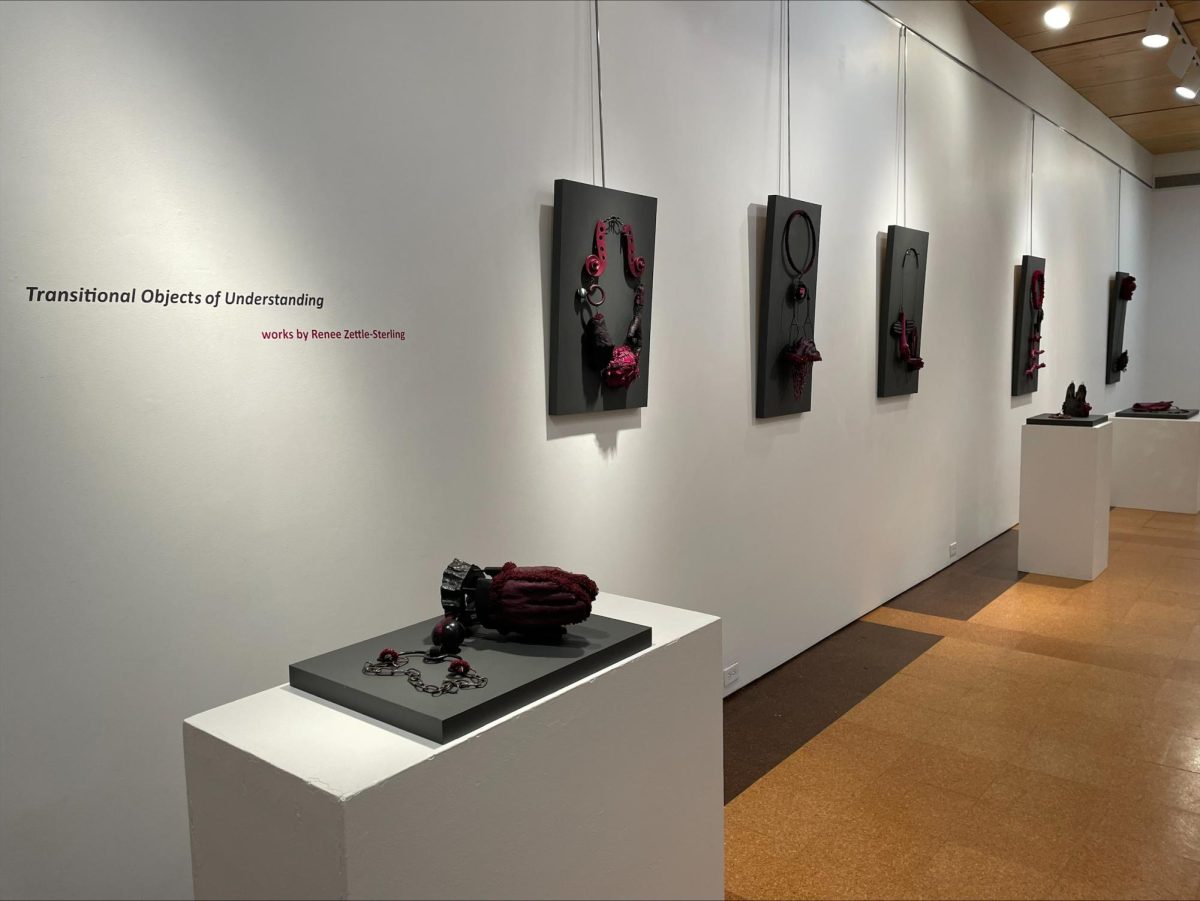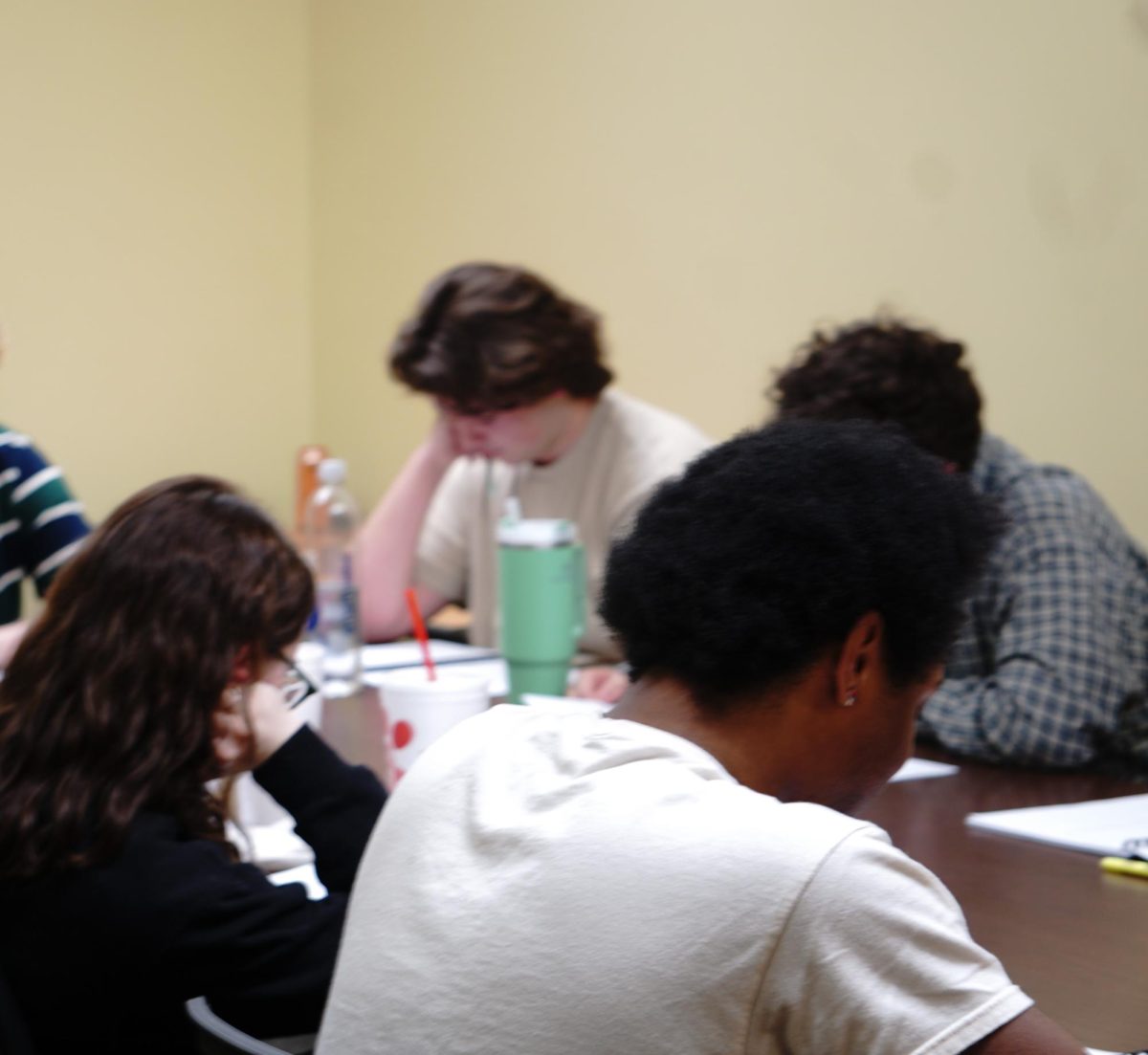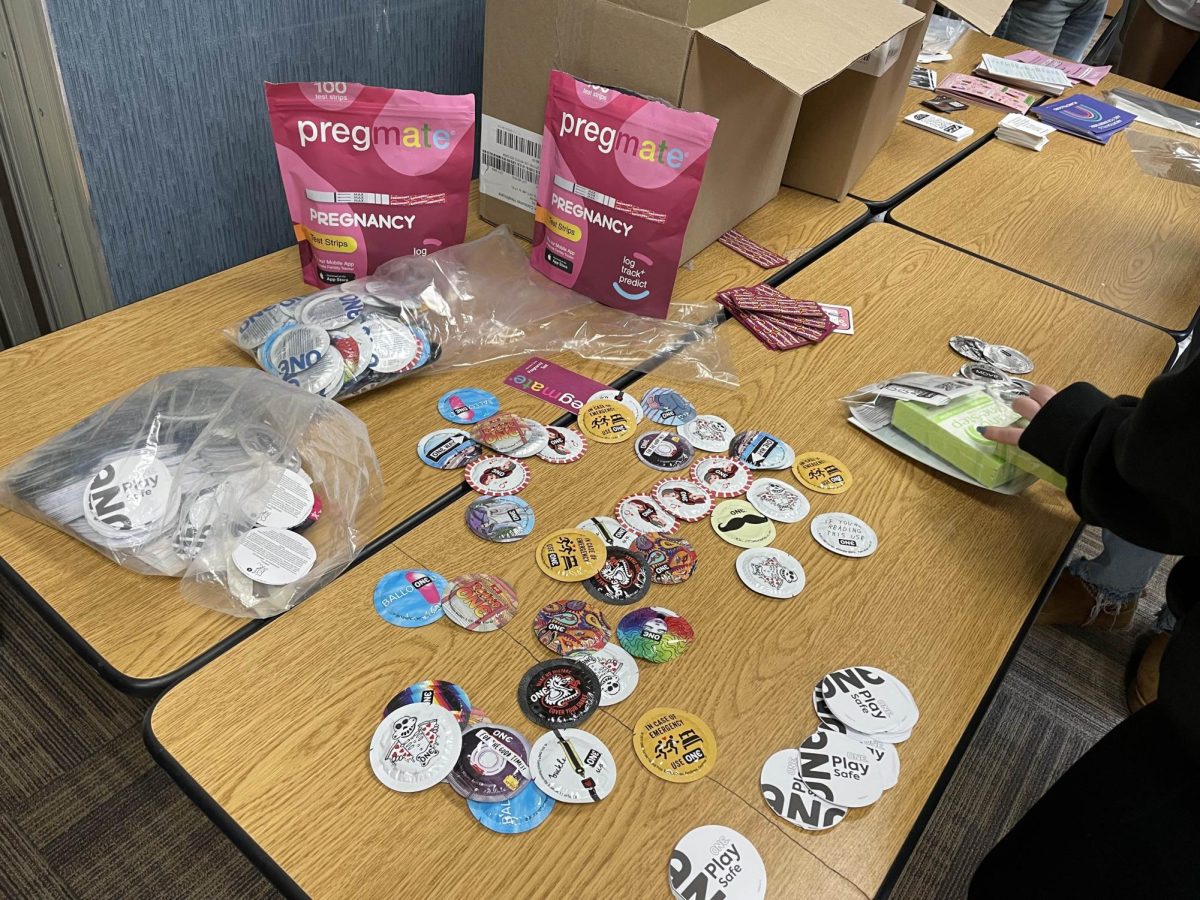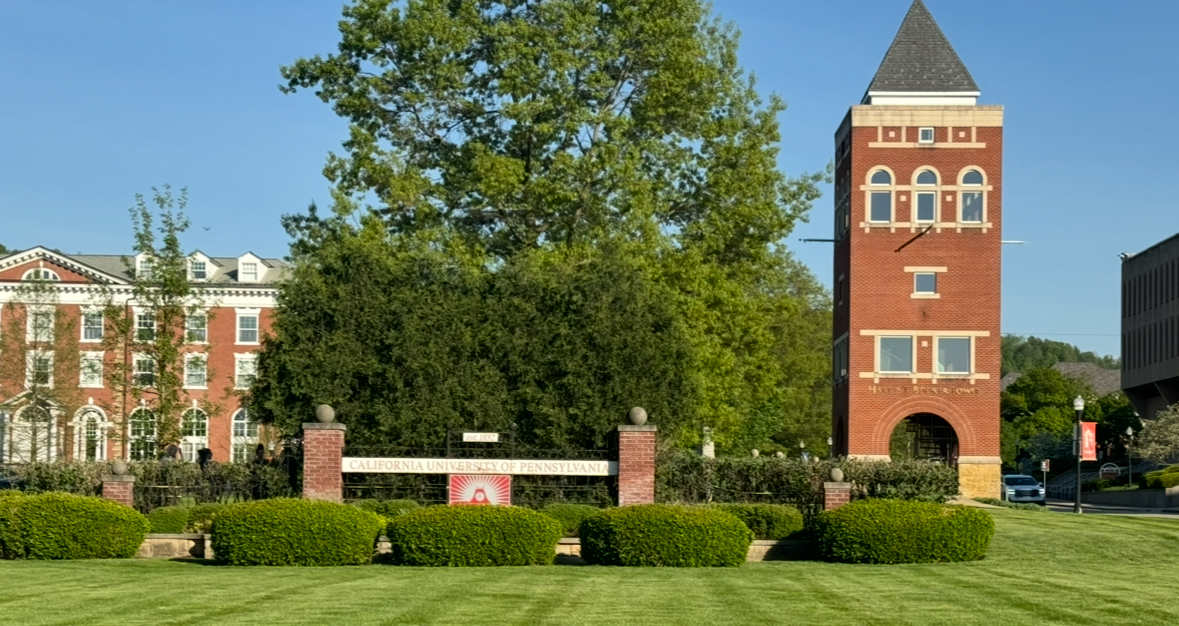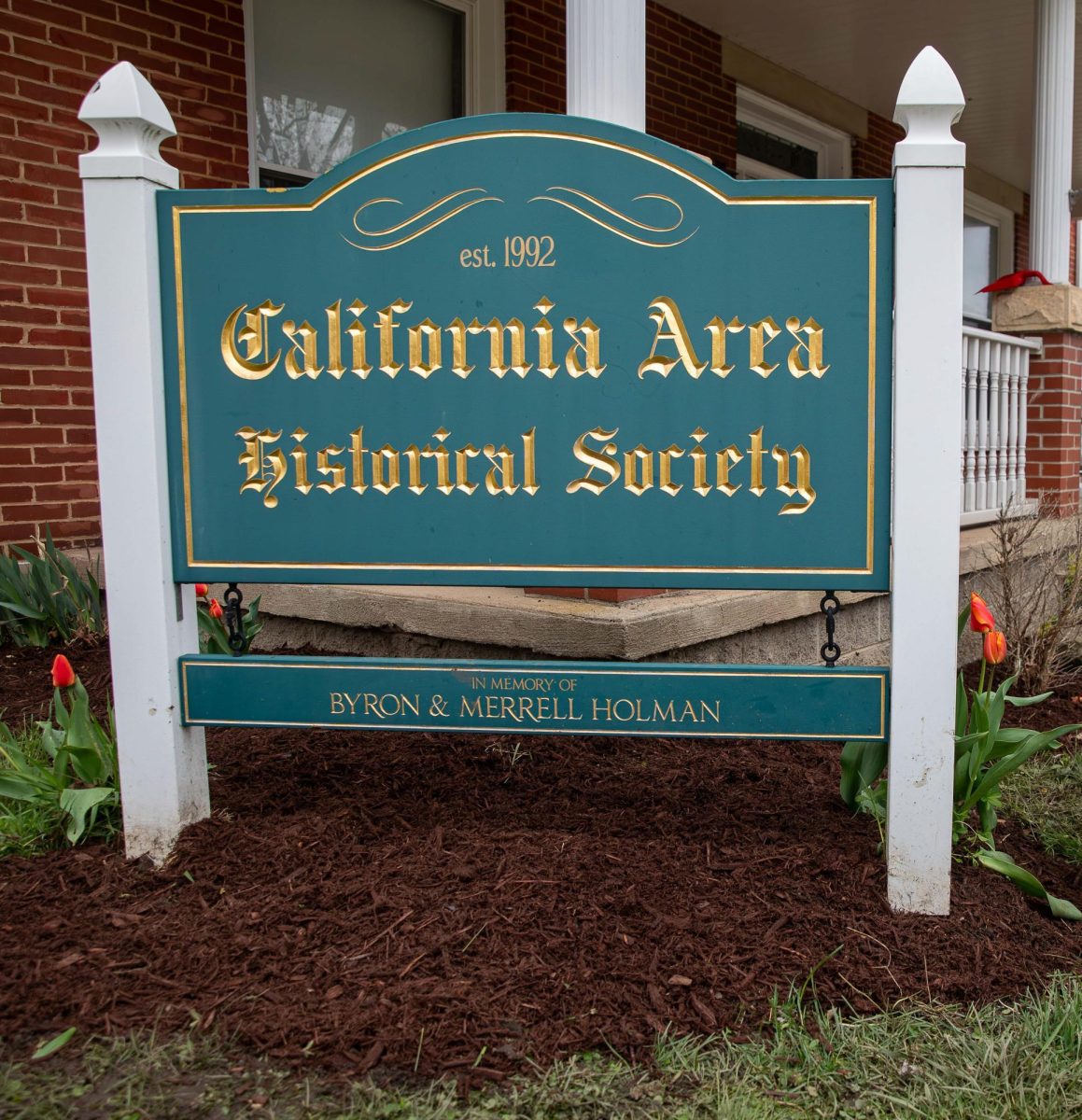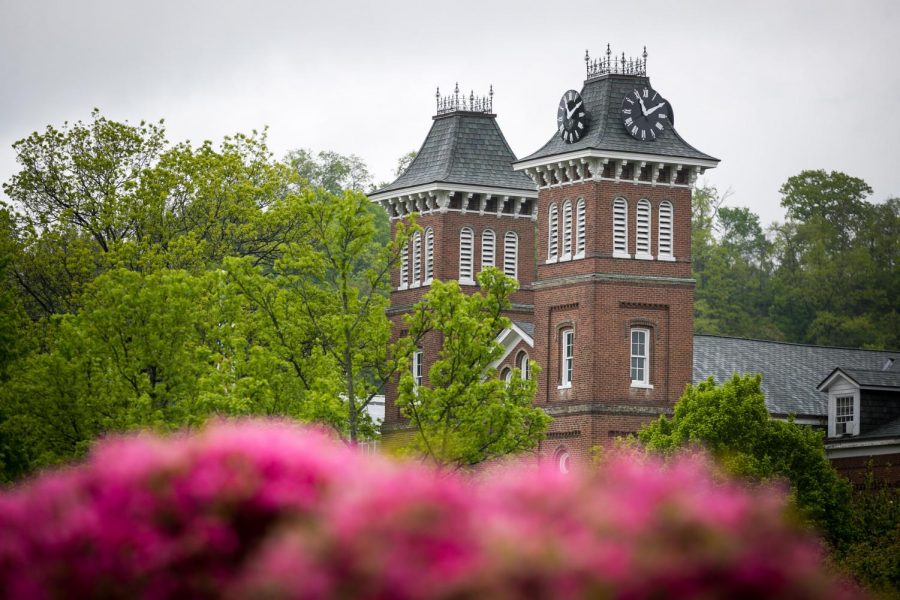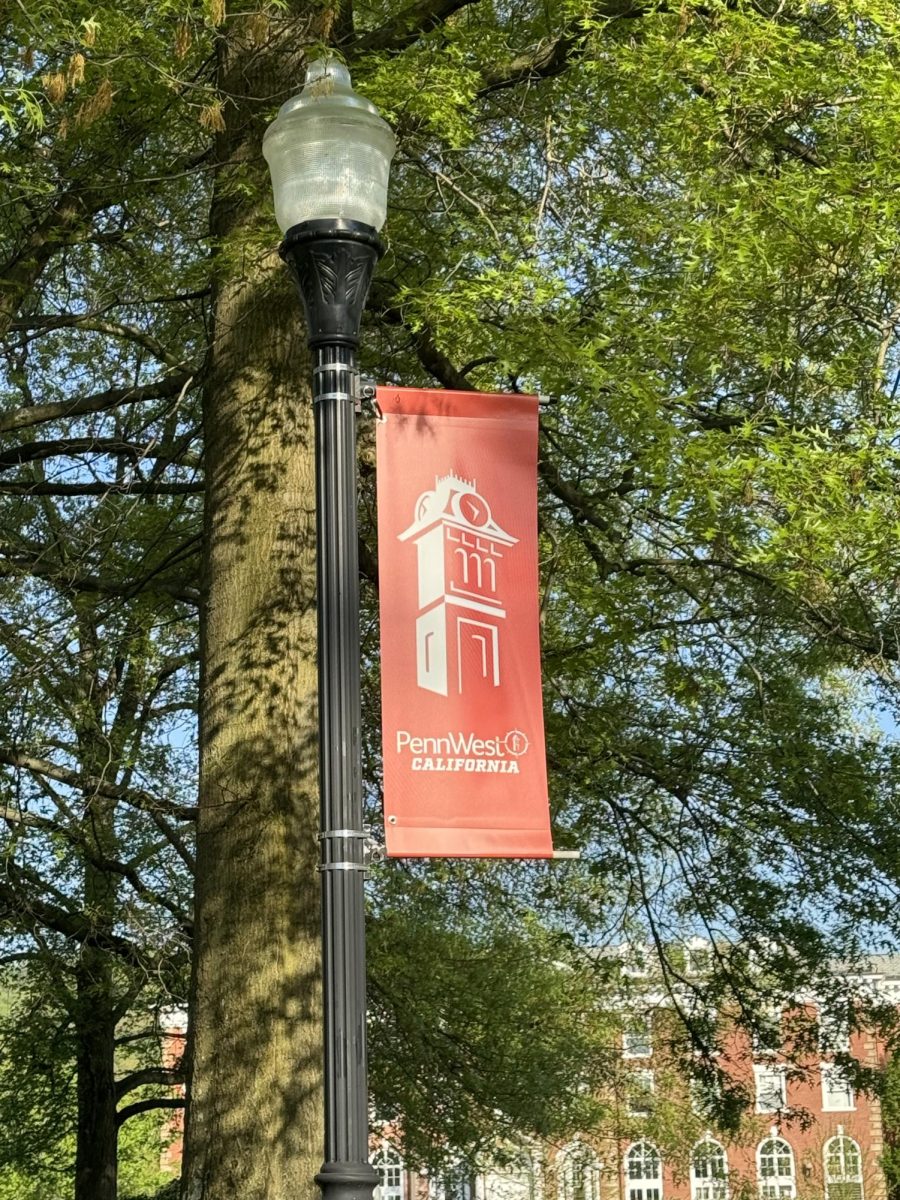PennWest students can experience the work of artist Renée Zettle-Sterling at the Manderino Library Gallery located on the California campus until December 2.
“Transitional Objects of Understanding,” located on the third floor of the library, explores themes of mourning practices and connections with those who are still living through color use and paper casting.
Renée described this process as taking plaster gauze and making a mold of someone’s hand, then blending cotton linters with water and pressing the resulting mushy, paper-like substance into the molds to construct hand models.
“It’s a very basic technique, and probably one of my favorites,” Zettle-Sterling said.
This specific installation contains a couple of years’ worth of work, as Zettle-Sterling has only been able to fit her own art into her busy schedule during the summers, finishing around two pieces per year.
Zettle-Sterling knew from a young age that she would be an artist since she had always been creating.
“My Dad died when I was 4, going on 5, so I think art has always been therapy for me,” Zettle-Sterling said.
Students visiting the gallery will observe a dramatic shift in color moving throughout the pieces in the exhibit.
Zettle-Sterling uses black and more somber tones of greys to represent mourning that dramatically changes to magenta: a representation of kindness and transformation.
“The [magenta] work really becomes alive and it’s about collaborations and the joy in working with other people,” Zettle-Sterling said.
Visitors will often notice the appearance of hands. According to Sterling, the hand has been associated with empathy for some time.
In addition to creating, Zettle-Sterling also works as a professor of visual arts and media and is the department co-chair at Grand Valley State University in Michigan.
Her exhibit ultimately ended up on the PennWest campus because of her good friend, Jim Bové, a PennWest art professor.
Bové and Zettle-Sterling went to graduate school together at Edinboro University and even worked together at Grand Valley State University for some time.
Since then, they have collaborated on multiple different projects including Bové traveling to Michigan almost every year to teach a workshop and give a lecture to her students.
This time, Zettle-Sterling and Bové decided it was time for her to bring her art to PennWest as part of their collaborative endeavor.
Three of Bové’s ceramics students even helped Zettle-Sterling with the setup of the installation with “no hesitation” and will even take it down and put it in storage come December.
Zettle-Sterling also gave a presentation before the opening of the installation on Oct. 24, where the crowd consisted of enthusiastic PennWest students from both California and Edinboro campuses and even a former professor of hers.
After the presentation and opening of the installation, Zettle-Sterling had a line of students waiting to talk to her, which had never happened before, according to her.
“I just couldn’t get over it, the curiosity in the students after the talk, and wanting to tell me about their losses and their relationships. It was just really wonderful,” Zettle-Sterling said.
Engineering major, Samuel Dadio, attended the opening of the installation and said both her inspiration for the pieces and representation of empathy using hands were very fascinating and unique.
Zettle-Sterling believes that being able to create art isn’t just some gift; it is a lot of hard work where showing up and being present is necessary. It is a business.
“You have a value to what you do,” Zettle-Sterling said. “You’re a lot of different things. You’re not just an artist, you’re [also] a businessperson.”

